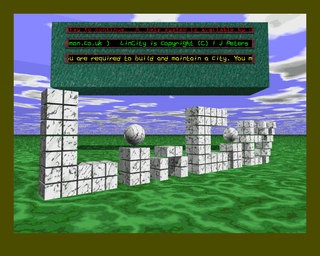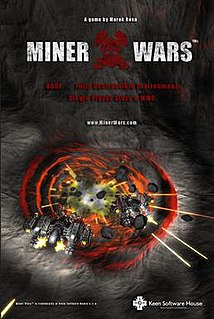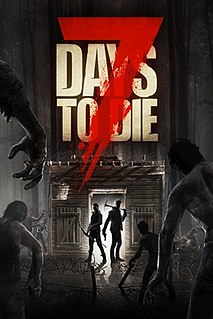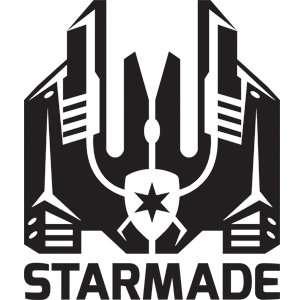
Interstellar travel is the hypothetical travel of spacecraft from one star system, solitary star, or planetary system to another. Interstellar travel is expected to prove much more difficult than interplanetary spaceflight due to the vast difference in the scale of the involved distances. Whereas the distance between any two planets in the Solar System is less than 30 astronomical units (AU), stars are typically separated by hundreds of thousands of AU, causing these distances to typically be expressed instead in light-years. Because of the vastness of these distances, non-generational interstellar travel based on known physics would need to occur at a high percentage of the speed of light; even so, travel times would be long, at least decades and perhaps millennia or longer.

Heat transfer is a discipline of thermal engineering that concerns the generation, use, conversion, and exchange of thermal energy (heat) between physical systems. Heat transfer is classified into various mechanisms, such as thermal conduction, thermal convection, thermal radiation, and transfer of energy by phase changes. Engineers also consider the transfer of mass of differing chemical species, either cold or hot, to achieve heat transfer. While these mechanisms have distinct characteristics, they often occur simultaneously in the same system.

In 3D computer graphics, a voxel represents a value on a regular grid in three-dimensional space. As with pixels in a 2D bitmap, voxels themselves do not typically have their position explicitly encoded with their values. Instead, rendering systems infer the position of a voxel based upon its position relative to other voxels.

Deuteros: The Next Millennium is the sequel to the sci-fi strategy video game Millennium 2.2, published by Activision for the Amiga and Atari ST. Ian Bird designed and wrote the game, with graphics by Jai Redman and music by Matt Bates.

SolarQuest is a space-age real estate trading board game published in 1985 and developed by Valen Brost, who conceived the idea in 1976. The game is patterned after Monopoly, but it replaces pewter tokens with rocket ships and hotels with metallic fuel stations. Players travel around the sun acquiring monopolies of planets, moons, and man-made space structures. They seek to knock their opponents out of the game through bankruptcy, as well as optional laser blasts and dwindling fuel supplies.

Lincity is a free and open-source software construction and management simulation game, which puts the player in control of managing a city's socio-economy, similar in concept to SimCity. The player can develop a city by buying appropriate buildings, services and infrastructure. Its name is both a Linux reference and a play on the title of the original city-building game, SimCity, and it was released under the GNU General Public License v2.

A sandbox game is a video game with a gameplay element that provides the player a great degree of creativity to interact with, usually without any predetermined goal, or alternatively with a goal that the player sets for themself. Such games may lack any objective, and are sometimes referred to as non-games or software toys. More often, sandbox games result from these creative elements being incorporated into other genres and allowing for emergent gameplay. Sandbox games are often associated with an open world concept which gives the player freedom of movement and progression in the game's world. The term "sandbox" derives from the nature of a sandbox that lets children create nearly anything they want within it.
Universe Sandbox is a series of interactive space sandbox gravity simulator educational software video games. Using Universe Sandbox, users can see the effects of gravity on objects in the universe and run scale simulations of the Solar System, various galaxies or other simulations, while at the same time interacting and maintaining control over gravity, time, and other objects in the universe, such as moons, planets, asteroids, comets, and black holes. The original Universe Sandbox was only available for Windows-based PCs, but an updated version was released for Windows, macOS, and Linux in 2015.

FortressCraft is a video game by British indie developer Projector Games, released on Xbox Live Indie Games on April 8, 2011. FortressCraft cites Minecraft, Infiniminer and Dwarf Fortress as direct inspirations for the design aspect of the game. The game utilizes textured voxels to simulate landscapes, traditionally reminiscent of other titles in the genre.

Miner Wars 2081 is a six degrees of freedom action-survival space-shooter simulation game produced by Keen Software House. The gameplay offers a choice of single player, co-op, and deathmatch multi-player. The game is set in the year 2081, 11 years after the destruction of all planetary objects in the Solar System. The story introduces the player to many types of missions: rescue, exploration, revenge, base defense, theft, transportation, stealth, search and destroy, pure harvesting or racing.

Kerbal Space Program (KSP) is a space flight simulation video game developed by Mexican developer Squad for Microsoft Windows, macOS, Linux, PlayStation 4, and Xbox One. In the game, players direct a nascent space program, staffed and crewed by green humanoid aliens known as "Kerbals". The game features a realistic orbital physics engine, allowing for various real-life orbital maneuvers such as Hohmann transfer orbits and orbital rendezvous.

Keen Software House is an independent video game developing company based in Prague, Czech Republic. The company was founded by Marek Rosa in 2010.

7 Days to Die is an early access survival horror video game set in an open world developed by The Fun Pimps. It was released through Early Access on Steam for Microsoft Windows and Mac OS X on December 13, 2013, and for Linux on November 22, 2014. Versions for the PlayStation 4 and Xbox One were released in 2016 through Telltale Publishing, but are no longer being developed.

StarMade is an effectively infinite open-universe space simulation sandbox game in development by Schine for Windows, macOS, and Linux. StarMade is currently in alpha and is free to play, during alpha.
Space Engineers is a voxel-based sandbox game, developed and published by Czech independent developer Keen Software House. In 2013, the initial developmental release of the game joined the Steam early access program. During the following years of active development, Space Engineers sold over one million units. In total as of 2019 the game has sold over 3.5 million copies In May 2015, for approximately a year and a half, the game's source code was officially available and maintained by KSH to assist the modding community. On December 15, 2016, the game entered Beta and was later officially released on February 28, 2019.
SpaceEngine is an interactive 3D planetarium and astronomy software developed by Russian astronomer and programmer Vladimir Romanyuk. It creates a 1:1 scale three-dimensional planetarium representing the entire observable universe from a combination of real astronomical data and scientifically-accurate procedural generation algorithms. Users can travel through space in any direction or speed, and forwards or backwards in time. SpaceEngine is in beta status and up to version 0.980, released in July 2016, it was and still is available as a freeware download for Microsoft Windows. Version 0.990 beta was the first paid edition, released in June 2019 on Steam. The program has full support for VR headsets.

Outer Wilds is a 2019 action-adventure game developed by Mobius Digital and published by Annapurna Interactive. It first released for Windows, Xbox One, and PlayStation 4 before releasing for PlayStation 5 and Xbox Series X/S in 2022. A Nintendo Switch version is also under development. The game features the player character exploring a solar system stuck in a 22-minute time loop that ends with the sun going supernova.

Dual Universe is a first person based space simulation sandbox massively multiplayer online role-playing game developed by the Paris-based game development studio, Novaquark.
Renga is a shoot 'em up video game developed and published by British studio wallFour. Designed for movie theaters for up to one hundred players, players are given laser pointers and are tasked with cooperatively building and defending a space ship. It was showcased at 2012's Indiecade, where it won the Developers Choice Award.

Minetest is a free and open-source sandbox video game and game creation system with focus on voxel graphics. It is written primarily in C++ and makes use of the Irrlicht Engine. Minetest provides an API for users to write their own games and mods written in Lua. It is cross-platform, being available for Linux-based systems, FreeBSD, Microsoft Windows, MacOS, and Android.


















